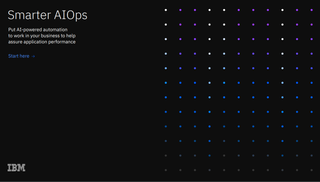LinkedIn is filled with deepfake 'virtual employees'
Stanford Internet Observatory researchers find more than 1,000 fake profiles on the business site

Businesses are using artificial intelligence software to create virtual employees on LinkedIn that send out marketing messages on their behalf.
That's according to researchers from the Stanford Internet Observatory, which found more than 1,000 deepfake accounts on the business site, The Times reports.
What the researchers found on LinkedIn were more than 1,000 AI-generated images that didn't belong to any real people, either alive or dead. It was also explained that none of the images appeared to be mixtures of real people mashed together.
Renée Di Resta, a technical research manager at the Stanford Internet Observatory, received a message from an account belonging to "Keenan Ramsey", a saleswoman claiming to represent a communications firm that sells video conferencing software. Normally, Di Resta would ignore such a message, however, her attention was grabbed by some unusual elements of Ramsey's profile picture. To begin, the woman only had one earring.
Di Resta has researched Russian disinformation programmes and anti-vax conspiracy theories, and her experience helped her to spot the clues. From the earring, she also noticed that parts of the hair seemed to disappear, and the eyes were also slightly wonky. This prompted the study which went on to find more than 1,000 similar faces.
However, they didn't turn out to be scammers or accounts created by hackers; instead, they appeared to be sort of 'virtual employees' set up by sales firms to drum up business for themselves. Along with AI-generated faces, the accounts included fake education and employment credentials and fictitious persona. Di Resta suggested that the businesses were using this tactic to send out mass messages without needing to hire more staff or breach messaging limits imposed by LinkedIn.
Some of these companies want to "automate away the manual labour of making all those phone calls or sending all those messages," DiResta said.
Get the ITPro. daily newsletter
Receive our latest news, industry updates, featured resources and more. Sign up today to receive our FREE report on AI cyber crime & security - newly updated for 2024.
"Our policies make it clear that every LinkedIn profile must represent a real person," a LinkedIn spokesperson said. "We are constantly updating our technical defences to better identify fake profiles and remove them from our community, as we have in this case. At the end of the day, it's all about making sure our members can connect with real people, and we're focused on ensuring they have a safe environment to do just that."
Bobby Hellard is ITPro's Reviews Editor and has worked on CloudPro and ChannelPro since 2018. In his time at ITPro, Bobby has covered stories for all the major technology companies, such as Apple, Microsoft, Amazon and Facebook, and regularly attends industry-leading events such as AWS Re:Invent and Google Cloud Next.
Bobby mainly covers hardware reviews, but you will also recognize him as the face of many of our video reviews of laptops and smartphones.






